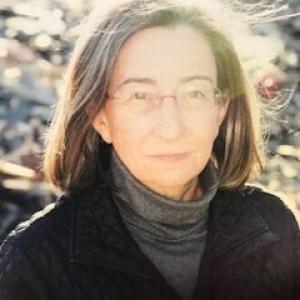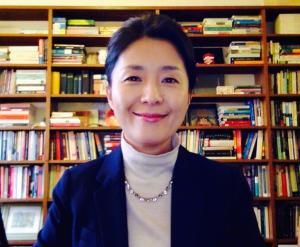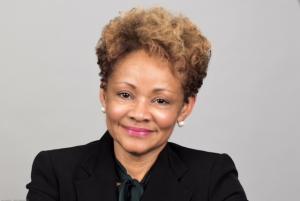Resources

At the heart of Paulo Freire’s critical pedagogy is the dictum of “reading the word and reading the world.” As a literacy specialist who worked with Brazilian peasants, Freire learned from these students the necessity of making the connection with their lived experience. Teaching for social change takes participants beyond the “I am the teacher/you are the student” hierarchical model. I have learned that the democratic sharing of knowledges is more possible when a class connects the social justice issues, we are studying with the community just beyond our campus. Learning becomes a series of dialogues with texts and issues and the organizations who are working for immediate and systemic change. The social justice organization nearest to my campus is an emergency shelter for families less than a block from campus, Decatur Cooperative Ministry (founded in 1969). Their motto is: “Short-term shelter. Long term self-reliance.” DCM began as an interfaith response to poverty and homelessness in Decatur, GA. Their ministries grew with the gaps caused by economic inequality over the years to address needs of transitional housing, financial literacy, and food insecurity. They work toward the goal of permanent housing and family success. DCM is part of a local network of organizations addressing economic injustices in the Atlanta area. DCM’s emergency housing is aptly called “Hagar’s House.” For over twenty-five years, my introductory-level Bible class has worked in partnership with this shelter as a “practicum” or small internship that is supervised by DCM staff. Students provide various assistance: tutoring with children after school, serving as lead volunteers at weekly dinners or as overnight hosts, working the main desk, providing web and social media ideas and support, assisting in financial literacy classes, or collecting food from the local food bank. Students study poverty and housing inequities locally (through the Decatur Beacon Hill Black Alliance for Human Rights) and nationally (with the Poor People’s Campaign: A National Call for Moral Revival). My classes are diverse, with South Asian refugees, first generation college students, and a few who have experienced homelessness at some point during their lives. We take risks as we engage the social issues in the world, and we prepare for our onsite work by engaging issues of race and class, along with our stereotypes and questions. This semester we are writing blogs for the DCM newsletter on the biblical Hagar from Genesis 16 and 21 (and beyond). Blog writing emerged during the pandemic as a need identified by DCM when we had to pivot to a virtual classroom, and working with young children onsite was not an option. Our partner organization identified their needs, and they wanted to highlight our blogging as a way to give something concrete back to the staff that is useful for their member congregations, staff, board, and clients. Students are writing these blogs on Hagar along with a reduced onsite practicum. We are first engaging the scholarship on Hagar from womanist and feminist perspectives. And we are reading poetry (Mohja Kahf) and a dramatic piece (Kathryn Blanchard). Hagar as Black, Egyptian, slave, surrogate, mother, aunt, homeless, bold namer of the deity (as El Roi, the One Who Sees), and matriarch of Islam are main areas of investigation. Our community partner would like its supporters to know more about their shelter’s namesake. Students will encounter Hagar in the biblical text, in scholarship and literary imaginations, and in their work in the second half of the semester with those who live at Hagar’s House. Students will serve and share meals, open doors and supply cabinets, play with children in the community room and design programs, and begin conversations. They will explore the root and systemic causes of poverty and housing and food insecurity in the US through one nonprofit organization’s commitment to meeting emergency needs and working toward systemic social justice. We are mapping the past—the biblical stories of poverty and displacement—as well as the current ones on our campus and in our neighborhood. What I have discovered over these years of partnership is that discoveries also happen beyond the classroom walls. Engaging the complex issues of systemic poverty and homelessness takes concrete form in the faces and lives of the staff and clients at DCM. The Hagar of the Bible and Qur’an continues her story—this time in her own words.

On March 30, 2020, Daniel Prude, a 41-year-old Black man, died a week after being pinned to the ground by police officers in Rochester, New York, where our school is located. This incident sparked protests, with some former and current students serving as public street chaplains, providing prayers and spiritual support and calling for police reform. When students expand and act out what they have learned in the classroom, should I pretend nothing happened in the community and the world? Although the professor tries to take an apolitical position, students do not separate their learning from reading the world and living in the world. In a group addressing “Things they didn’t teach in Seminary,” a few former students asked practical questions such as how to respond to parishioners who resist sermons explicitly addressing or supporting social movements like #BLM. While types of activism vary—from hashtag activism to solidarity activism on the ground—and even if we do not use the term “activism,” our teaching necessarily involves our perspectives on social justice and our political positions and actions. Paulo Freire argues that because education functions to reproduce dominant ideologies, it can never be politically neutral.[1] Teaching involves “reading the world” beyond the boundary of the classroom. Teaching the biblical text and its cultural and geographical world is not limited to the historical past but addresses highly politicized territory where people still suffer from wars and occupation. Some may be concerned when teachers impose their political perspective or ideology upon students because teachers have power, but when we find our former, current, and future students acting as civic agents for change and religious leaders in social movements, our activism as teachers does not force them to believe or act according to our convictions. Instead, as Freire teaches, students have the right to challenge or reject the teacher’s perspective and the ability to form their own views and speak and act out their opinions. Many activists in the present time understand that what is critical in social movements is not charismatic leaders but the community. The student community has had to grieve and reflect on what they have learned, engaging the world. The pedagogical potential of performative grieving in times of state violence, argued for by scholars in education, came to the fore in my online teaching during the pandemic. I often had students who broke down because of losses—losses of persons, jobs, health—and because of the confusion that systemic racism brought during the pandemic. I was able to say to them, “It’s okay to say it’s not okay” or “It’s okay to cry,” not because I was stronger than my students, but because we needed such collective grieving. For me, building a community of mourning in the classroom was a gesture of activism. However, as Angela Davis said, if “freedom is a constant struggle,”[2] how long should we perform grief in our teaching? Teacher-activists have become exhausted, particularly in the past years. Critically-minded professors are wrung out by bringing social justice issues into our teaching, one after another (racism, gender inequality, heterosexism, economic injustice, colonialism, climate change, etc.). I create and teach courses like Global Read of the Bible, Feminist and Womanist Interpretation of the Bible, and Migration, Immigration, and Diaspora. Teaching such courses requires continuous engagement with and activism for social justice, as well as a breadth of knowledge. Such continued social challenges and grief causes emotional exhaustion. This is why we need to find communities of mourning and moments of contemplation. As I offered space for students in my classes to mourn, the Pacific Asian North American Asian Women in Theology and Ministry community (PANAAWTM) offered me a space for mourning when anti-Asian racism was climactic in the Atlanta mass shootings on March 17, 2021. Wo/men professors, students, and activists of Asian heritage gathered online to grieve, reflect, and pray together. A few sang Asian traditional songs and offered prayers of our ancestors. Through these practices, I gained spiritual strength, intellectual courage, and a clearer sense of commitment to teaching for social justice. I am grateful for another opportunity that the Wabash Center is giving four Asian and Asian American female professors in New Testament through a Peer Mentoring Clusters grant next year. I am sure that reflecting on teaching—even such seemingly objective courses as Hebrew and Introduction to New Testament, which two of my colleagues are teaching this summer—will lead us to grieve and be “contemplative in action,” because our teaching is not an individual act, but is always situated in the particular contexts where we struggle against oppressions and injustices on the institutional and social level. [1] Paulo Freire, Pedagogy of Freedom: Ethics, Democracy, and Civic Courage (Lanham, MD: Rowman & Littlefield Publishers, 1998). [2] Angela Davis, Freedom Is a Constant Struggle: Ferguson, Palestine, and the Foundations of a Movement (Chicago: Haymarket, 2016). Photo: Justine Murphy (@CitizenMurphy), "Brown," Twitter, September 16, 2020

When I occupy the authoritative epistemological space, when I take my place, at the head of a biblical studies course as a black woman, I am conscious of the radicalness of my embodied performance, intellectually and physically. White men are considered by the majority of academics to be the quintessential biblical studies experts, which is not unrelated to racism and sexism and their impact on white and nonwhite scholars and students. My intersectional identity as a black woman New Testament scholar and my decentering work are both disruptive of white men’s positionality and epistemological superiority. Sherene Razack states that “a radical or critical pedagogy is one that resists the reproduction of the status quo by uncovering relations of domination and opening up spaces for voices suppressed in traditional education.”[1] This blog post is my third critical reflection on the pedagogical collaboration between Dr. Dan Ulrich and me in which I taught a summer course on African American Biblical Interpretation and the Gospel of Luke for Bethany Theological Seminary/Earlham School of Religion and Columbia Theological Seminary students. I was the teaching professor, and Dr. Ulrich was the learning professor. He is a white cisgender man who has taught for over twenty-nine years; I am an African American woman with over fourteen years’ experience teaching biblical studies (for most of my career I was required to teach both testaments, including Hebrew and Greek languages). Our syllabus identified me as the teaching professor. Because of the tendency of students to genuflect to white male authority at the expense of women and black and brown scholars, I chose not to allow Dr. Ulrich to act as an editing teacher editing teaching or to participate in the discussion forums, except the one reserved for introductions. In that forum at least one white student stated that she looked forward to learning from Dr. Ulrich. I sensed there were times when some students wished Dr. Ulrich would rescue them from my authoritative and often overtly culturally-situated epistemologies and gaze. My gaze as a black woman was temporary, but the white gaze is inescapable. The white gaze to which black and brown scholars are subjected is pervasive, invading the classroom and transcending it. The white gaze requires that black and brown peoples constantly fortify themselves against attempts to diminish and discount their epistemological resources and constructions, especially when (or to preclude or mitigate) the decentering whiteness. I sometimes invited Dr. Ulrich to contribute to the discussion, but I never relinquished my authority. To be under the white gaze is to be constantly on guard. I did not attempt to prove the legitimacy of my presence and authority but to stand in it, unapologetically, in each synchronous class session and discussion forum. I did hesitantly, at first, include Dr. Ulrich in the Zoom small group break-out sessions. Each time, I visited every group except the one to which I randomly assigned him. I had to trust that he would respect my authority even when beyond my gaze, and I believe he did. I did not police him in those groups. I do not know if Dr. Ulrich experienced to any degree, even if for a few hours for two weeks, the gaze or surveillance to which black and brown bodies are subjected perennially. White professors often include our works as required readings, but the extent and the ways in which students are permitted to value or accept them as authoritative or legitimate are policed. For example, black students have complained of white instructors teaching feminist courses that include womanist readings but that also subsume womanism under feminism, as if it is feminism’s intellectual child, or mitigate womanism’s political agenda by alleging that womanism is not as political, if at all, as feminism. During this COVID-19 pandemic, more white scholars are inviting black and brown scholars into their classrooms via Zoom to discuss their works. Hopefully, these opportunities for hearing from the scholars themselves will limit attempts to diminish and/or misrepresent our work, whether intentional or not. When I occupy the space at the head of a classroom, even when a white male colleague does not occupy the seat of learner, I do so in the minds of many students, across race, ethnicity, and gender, as a proxy or surrogate for white male biblical scholars/ship. Over the years, (last year was no exception), students, primarily white across gender, have made statements like “Dr. [white male] does it this way or said this.” Early in my career, two separate white women students, in two separate courses—one in biblical hermeneutics and one in Hebrew Bible—believed it their duty to notify me that “they did not have to agree with me.” One objected to my use of the NRSV with apocrypha, informing me that it was not a Christian Bible. I don’t remember to what the other woman objected. But in my mind, their objections had more to do with who I am—a black woman—than with what I asserted. I was the first black woman biblical scholar hired at that institution. In most seminaries and theological or divinity scholars, students will never be taught by a black man or woman biblical scholar. Unsurprisingly, of twenty-one students who responded to one of the collaborative course the course Moodle polls, only one had ever taken a Bible course taught by a black biblical scholar. One student had read a book by a black woman biblical scholar (that same student). All except one student had never read anything more recent than True to Our Native Land (2007). Black biblical scholars have published quite a bit since then. My work in that volume is a lot less progressive than my current work. In fact, as I noted in a previous blog, Dr. Ulrich stated that had he read my more recent work, he might not have asked me to teach this course. I am clear that my work is “radical” in relation to malestream Eurocentric biblical interpretation. It is still radical to encounter a black woman at the center or helm of a biblical studies course; it remains radical to center the bodies, voices, struggles, creativity, oppressions, scholarship, and communities of black women and men. In another Moodle poll, students responded to the question about reading black biblical scholars. For them black biblical scholars, black theologians, and black ethicists are interchangeable; they listed James Cone, Delores Williams, and other nonbiblical scholars, for example, in response to the question about the black biblical scholars they had read prior to this course. This response highlights the uncritical commodification and racialized substitutability of the intellectual contributions of black and brown peoples, that is less often encouraged and does not so readily occur with white biblical scholars. Instead of taking the time to find works produced by black and brown biblical scholars, white scholars and students, especially, will substitute one black or brown body for another in their publications and in biblical studies classrooms. An anti-racism agenda requires that we do differently. Notes [1] Sherene H. Razack, Looking White People in the Eye. Gender, Race, and Culture in Courtrooms and Classrooms (Toronto: University of Toronto Press, 1999), 44. This process of revelation and disruption is accomplished through “the methodology of storytelling.”